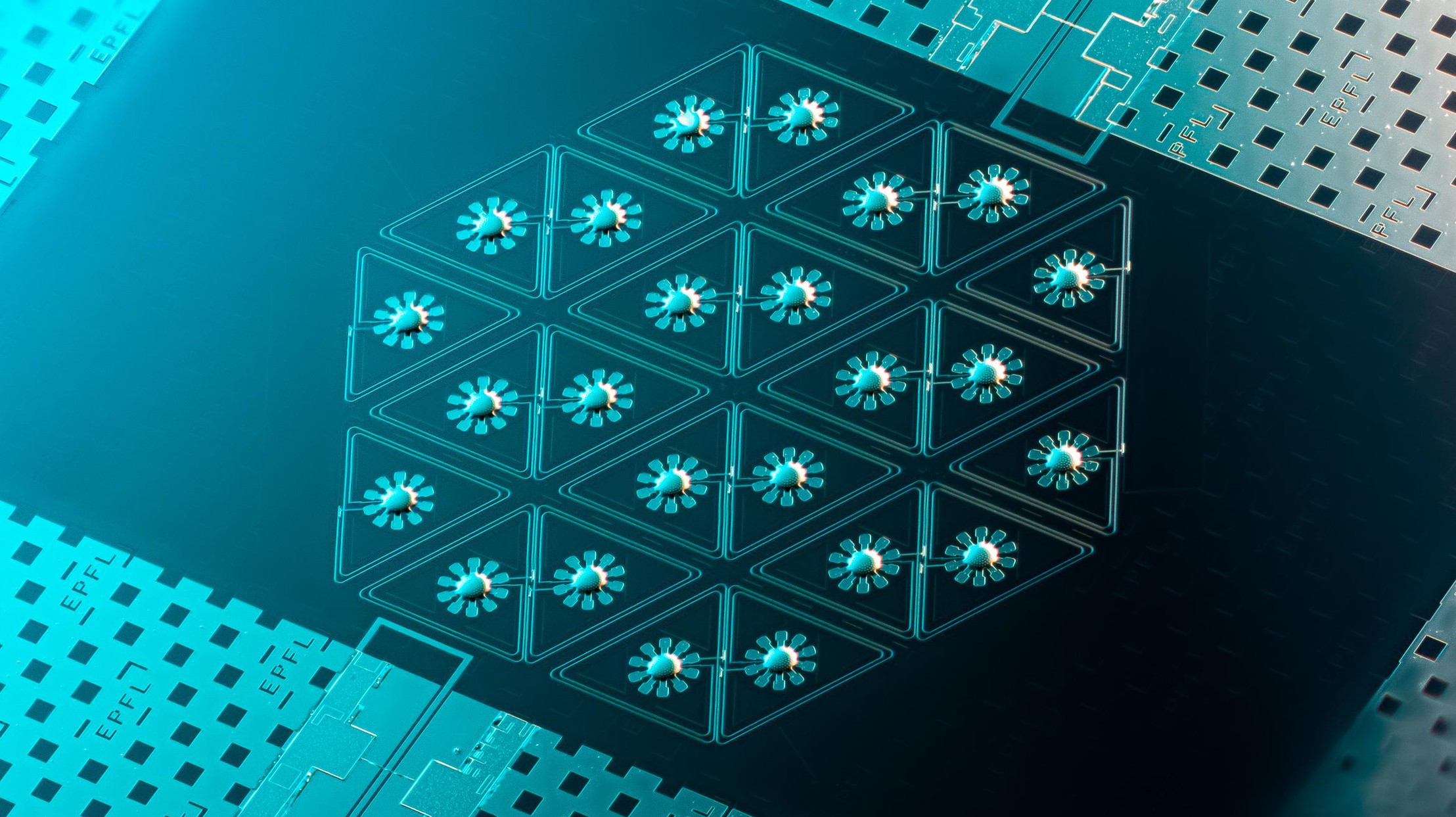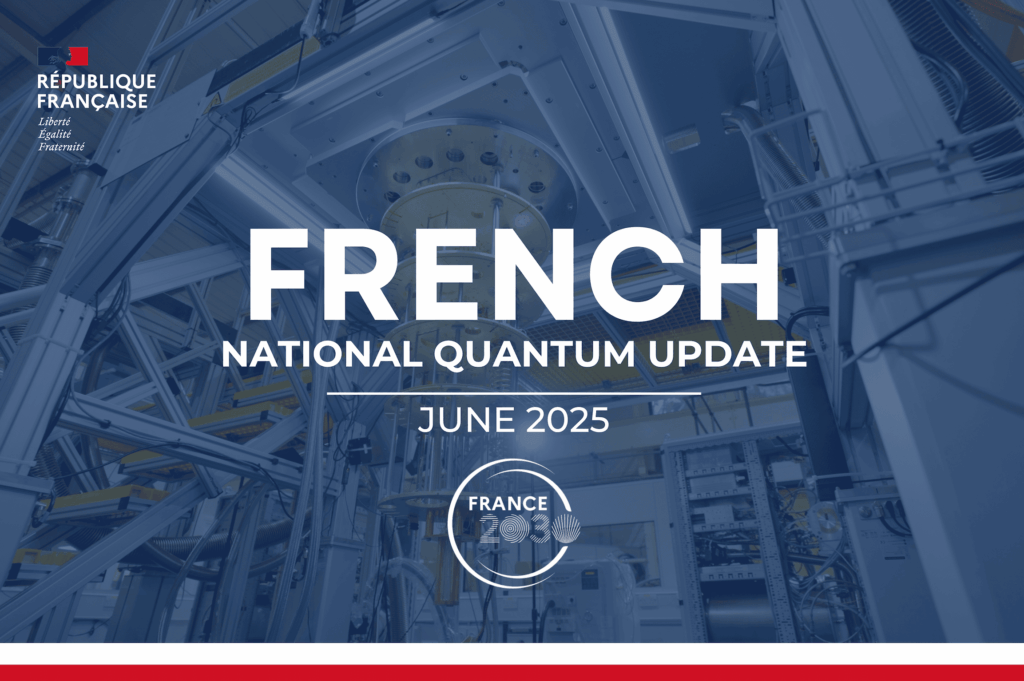Insider View
- Theoretical studies predict that significantly richer physics and novel dynamics can be accessed in optomechanical lattices, but reproducing devices experimentally has been a challenge.
- To approach this challenge, the researchers developed an optomechanical strained graphene lattice and studied non-trivial topological edge states using novel measurement techniques.
- The research is relevant to the precise control of micro-mechanical oscillators, which is fundamental to many contemporary technologies, from sensing and timing to radio frequency filters in smartphones.
- Image: A superconducting circuit optomechanical graphene lattice. Credit: Andrea Bancora (EPFL)
PRESS RELEASE — The precise control of micro-mechanical oscillators is fundamental to many contemporary technologies, from sensing and timing to radio frequency filters in smartphones. Over the past decade, quantum control of mechanical systems has been firmly established with atoms, molecules, and ions in the first wave of development and superconducting circuits in the second quantum revolution.
This has been in particular catalyzed by cavity optomechanics. The field has allowed us to control mesoscopic mechanical objects with electromagnetic radiation pressure force. This has substantially improved our understanding of their quantum nature, which has enabled a host of advances including ground-state cooling, quantum squeezing, and remote entanglement of mechanical oscillators.
Pioneering theoretical studies have predicted that significantly richer physics and novel dynamics can be accessed in optomechanical lattices, including quantum collective dynamics and topological phenomena. But reproducing such devices experimentally under high control, as well as and building optomechanical lattices that can host multiple coupled optical and mechanical degrees of freedom has been a challenge.

Researchers in the group of Tobias J. Kippenberg at EPFL’s School of Basic Sciences have now built the first large-scale and configurable superconducting circuit optomechanical lattice that can overcome the scaling challenges of quantum optomechanical systems. The team realized an optomechanical strained graphene lattice and studied non-trivial topological edge states using novel measurement techniques. This work is now published in Nature.
The key element, which is a part of the single site of the lattice, is a so-called “vacuum-gap drumhead capacitor”, which is made of a thin aluminium film suspended over a trench in a silicon substrate. This constitutes the vibrating part of the device and, at the same time, forms a resonant microwave circuit with a spiral inductor.
“We developed a novel nanofabrication technique for superconducting circuit optomechanical systems with high reproducibility and extremely tight tolerances on the parameters of the individual devices,” says Amir Youssefi, who led the project. “This enables us to engineer the different sites to be virtually identical, like in a natural lattice.”
The graphene lattice is well known to exhibit non-trivial topological properties and localized edge states. The researchers observed such states in what they call an “optomechanical graphene flake”, consisting of twenty-four sites.
“Thanks to the built-in optomechanical toolkit, we were able to directly and non-perturbatively image the collective electromagnetic mode shapes in such lattices,” says Andrea Bancora who contributed to the research. “This is a unique feature of this platform.”
The team’s measurements closely match the theoretical predictions, showing that their new platform is a reliable testbed for studying topological physics in one and two-dimensional lattices.
“By having access to both the energy levels and mode shapes of these collective excitations, we were able to reconstruct the full underlying Hamiltonian of the system, allowing for the full extraction of disorder and coupling strengths in a superconducting lattice for the first time,” says Shingo Kono, another member of the research team.
The demonstration of optomechanical lattices not only provides access to studying many-body physics in such realizations of condensed matter lattice models but will also provide a route towards novel hybrid quantum systems when combined with superconducting qubits.
Source: EPFL
If you found this article to be informative, you can explore more current quantum news here, exclusives, interviews, and podcasts.

















